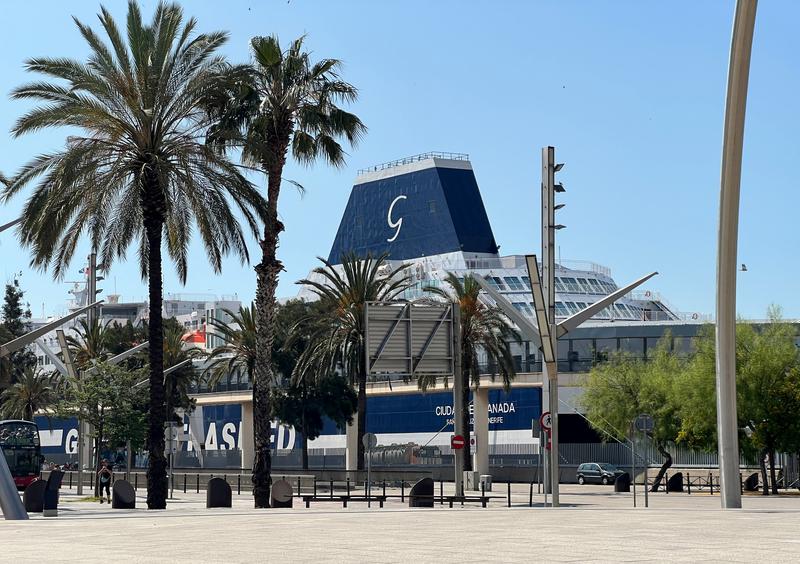Barcelona – Balearic Islands ferry passengers up 37% compared to 2019
Over 1.1m million travel by boat, 4.4m by plane in 2023

The route connecting Barcelona and the Balearic Islands is getting more and more popular – in general, and especially by ferry.
Over 1.1 million people traveled between the Catalan capital and Mallorca, Menorca or Eivissa by boat (excluding cruise ships) in either way in 2023, which is an all-time high, and a 37% increase compared to 2019, the highest number to date.
This accounts for 20% of the total flow, four percentage points more than in the last pre-pandemic year. The rest traveled by plane, which remains the overwhelmingly most used means of transport, with 4.4 million users in 2023. However, the pace of growth is much slower, with just a 5% increase in the same period.
One of the companies operating the route, Grimaldi-Transmed, believes that boat can still attract more people in the coming years.
Indeed, officer Miguel Pardo said that this year bookings for this summer are already 10% higher than last year, although a potential surge in accommodation prices could lead to a slowdown in reserves.
Ferries benefited from the pandemic
Also, he believes that ferries have benefited somehow from the pandemic.
"Some people 'learned' how to travel by boat, they had never experienced it, and when they found such a spacious and comfortable means of transport under those circumstances, they have probably repeated," said Grimaldi's institutional relations director, Miguel Pardo.
Talking to Catalan News, he said that the "advantages" include the possibility to bring more luggage than by place – something that sources from its top competitor, Baleària, shared also talking to this media outlet.
During the pandemic, they say, a lot of people traveled within the Spanish borders "and they knew the comfort and flexibility" that using ferries mean.
However, boat travel is still "insignificant compared to planes, which have carried around 14 million passengers to the Balearic Islands this year. With all of the ferry companies combined, I don't even think we reach 400,000 passengers," Pardo said.
5.62 million passengers: concerns of tourism overflow in Balearic Islands
All in all, 5.62 million people traveled between Barcelona and the Balearic Islands using either plane or ferry – in 2023, the tickets sold for the route by boat doubled compared to 2010, with a 51% increase by flight.
Facing islanders' concerns about the overflow of tourists in the past few years, Grimaldi's Miguel Pardo said that it is an "understandable feeling of saturation" and added that they wish passengers were more evenly distributed throughout the year, since they offer the same services all year round. Also, he believes the share of the total tourists in the Balearic Islands arriving by ferry is "very small" compared to flights.
Mallorca, top island
Per island, Mallorca is the top destination, with over half of the total journeys in both means of transport.
Almost half a million people traveled by ferry between Barcelona and Mallorca in 2023, well above the second top connection, Civitavecchia (Rome), that neared 300,000.
Ciutadella (Menorca) came third, with around 200,000, followed very closely by Eivissa. Alcúdia (Mallorca), Porto Torres (Sardinia) and Maó (Menorca) are the other ports registering over 100,000 people coming from or going to Barcelona.
Environmental concerns
Grimaldi believes that the CO2 footprint of boats "is 10 times smaller than that of planes" and that every new ferry is more efficient than the previous one, and is hopeful that improvements in biofuels and synthetic fuels will put an end to emissions for the good.
Balearia has announced a new 'fast ferry' for mid-July that will travel with natural gas, "which means considerably reducing the CO2 emissions."